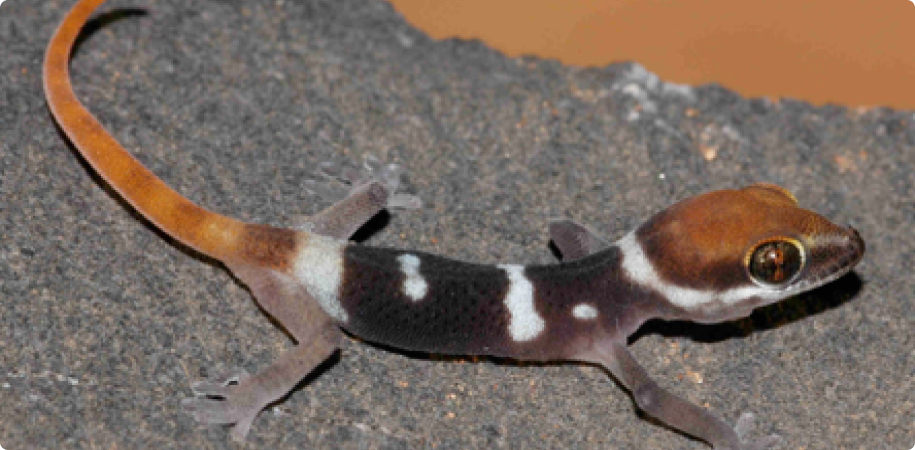Gecko Species Discovered
Expedition – Africa

A Brand New Species Surfaces in Sossusvlei, Namibia
The little guy was just a bit of black bug when Miles Paul saw it scurry across the floor. Or so he assumed. A blister beetle, he thought. But the astronomer and retired biologist, who was staying at Sossusvlei Mountain Lodge, the luxury safari camp run by CC Africa in Namibia’s NamibRand Nature Reserve, looked closer. This was no blister beetle but a tiny creature disguising itself to pass as one. A gecko! Paul realized. And not just an ordinary gecko, one of 70 or so species common to Australia, Mexico, and Africa. And not just an unusual gecko, like the various types that have a screamer of a mating call, look like a crocodile or are so easy to get along with that families keep them as pets. No, this gecko, Paul suspected, was entirely new. A never-before-seen species of lizard – geckos are lizards after all – that was making his debut, right there next to his shoe. Confirming his find with Professor William R. Branch, Curator of Herpetology at the Bayworld Museum in Port Elizabeth, South Africa, Paul, and Branch both were thrilled and astounded. “Totally tickled,” was the word used by the professor, who has embarked on the year-long process of getting the new gecko officially, scientifically described, confirmed, and named.
The little hatchling less than an inch long (he’ll grow to a maximum of three) that appears to be the first of his kind is a beauty: gold of head and tail, with a dusky gray body that sports intriguing white markings, the reptile is a blessed event especially for its larger meaning as a creature of the Namib. The “living desert” at a spry 80 million years old is home to only the most adaptable species – the exceptionally rare plants and animals that can live in one of the harshest and desolate places on earth. Starkly beautiful, with vast desert-scapes and endless horizons, the Sossusvlei area of the Namib hosts a unique community of desert-adapted beetles, spiders, lizards, and moles. Plants, too, are weirdly unique. The extremely rare, shrub-like Welwichia mirabilis, for instance, grows only two leaves throughout its life, its only nourishing moisture from sea fog. But these leaves become many feet long and are gnarled and twisted into eerie shapes by the desert wind.
Adjacent to the dunes along the plains of dry watercourses, larger animals like rare oryx and springbok (species of antelope) are found. But even these include not-your-usual species particularly clever about what it takes to survive near the Namib. Hartmann’s Mountain Zebra, for example, can simply refuse to sweat if water grows too scarce.
The gecko, however, is a happy desert dweller. It is unique among lizards for the chatty, chirping vocalizations it makes when among its family and friends. It has no eyelids but possesses fabulous toe-pads that allow it to walk upside-down across ceilings with ease. Some are even parthenogenic, meaning females can reproduce on their own, no male necessary. Whether subtly colored or brightly marked, whether it snacks on ants or dives beneath sand when threatened, geckos of Sossusvlei are geckos that celebrate the miracle of life in a region where its brilliance isn’t immediately obvious. But looking more closely, as did the lucky Miles Paul, and there you are: the desert ever thriving, alive with the joy of new birth.
Congratulations Sossusvlei on your new arrival!
